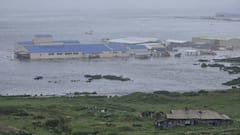Ozone Layer Slowly Healing, Likely To Be Restored Within Two Decades, Says UN
The hole in the Earth’s ozone layer that posed serious risks to humans is set to be completely healed within two decades in wake of the decisive action by governments.

The hole in the Earth’s ozone layer that posed serious risks to humans is set to be completely healed within two decades in wake of the decisive action by governments to phase out ozone-depleting substances, said United Nations based on its latest assessment.
The report said the loss of the ozone layer that puts humans at risk by exposing them to harmful ultraviolet rays from the sun is on track to be completely recovered by 2040 across the world apart from the polar regions, according to the publication Guardian.
“Ozone action sets a precedent for climate action,” the report quoted Petteri Taalas, secretary-general of the World Meteorological Organization as saying after the progress report was released on Monday. The assessment is conducted every four years.
ALSO READ: UK's Historic Rocket Launch Suffers Anomaly, Ends In Failure (abplive.com)
“Our success in phasing out ozone-eating chemicals shows us what can and must be done as a matter of urgency to transition away from fossil fuels, reduce greenhouse gases and so limit temperature increase,” Taalas added.
What are the findings of the report?
The report pointed out that poles will take a little longer. It said the ozone layer will fully recover by 2045 over the Arctic and by 2066 over the Antarctic.
As a result of the alarm over the depletion in the 1980s, the ozone layer has been steadily improving following the 1989 Montreal Protocol, an international agreement that has helped eliminate 99 per cent of ozone-depleting chemicals, such as chlorofluorocarbons (CFCs) that were used as solvents and refrigerants.
The UN said that the action taken also pushed the more ponderous response to the climate crisis. CFCs are also greenhouse gases and the rampant uncontrolled use would have raised global temperatures by as much as 1C by the middle of the century, causing grave danger as planet-heating gases are still not declining.
The global response to tackle CFCs indicates that the Montreal agreement should be considered “the most successful environmental treaty in history and offers encouragement that countries of the world can come together and decide an outcome and act on it”, according to David Fahey, a scientist at National Oceanic and Atmospheric Administration who is a lead author of the new assessment, the report added.
Fahey said that even with swift global action on CFCs, the chemicals still linger in the atmosphere for about a century. “It’s a bit like waiting for paint to dry, you just have to wait for nature to do its thing and flush out these chemicals,” he added.





































